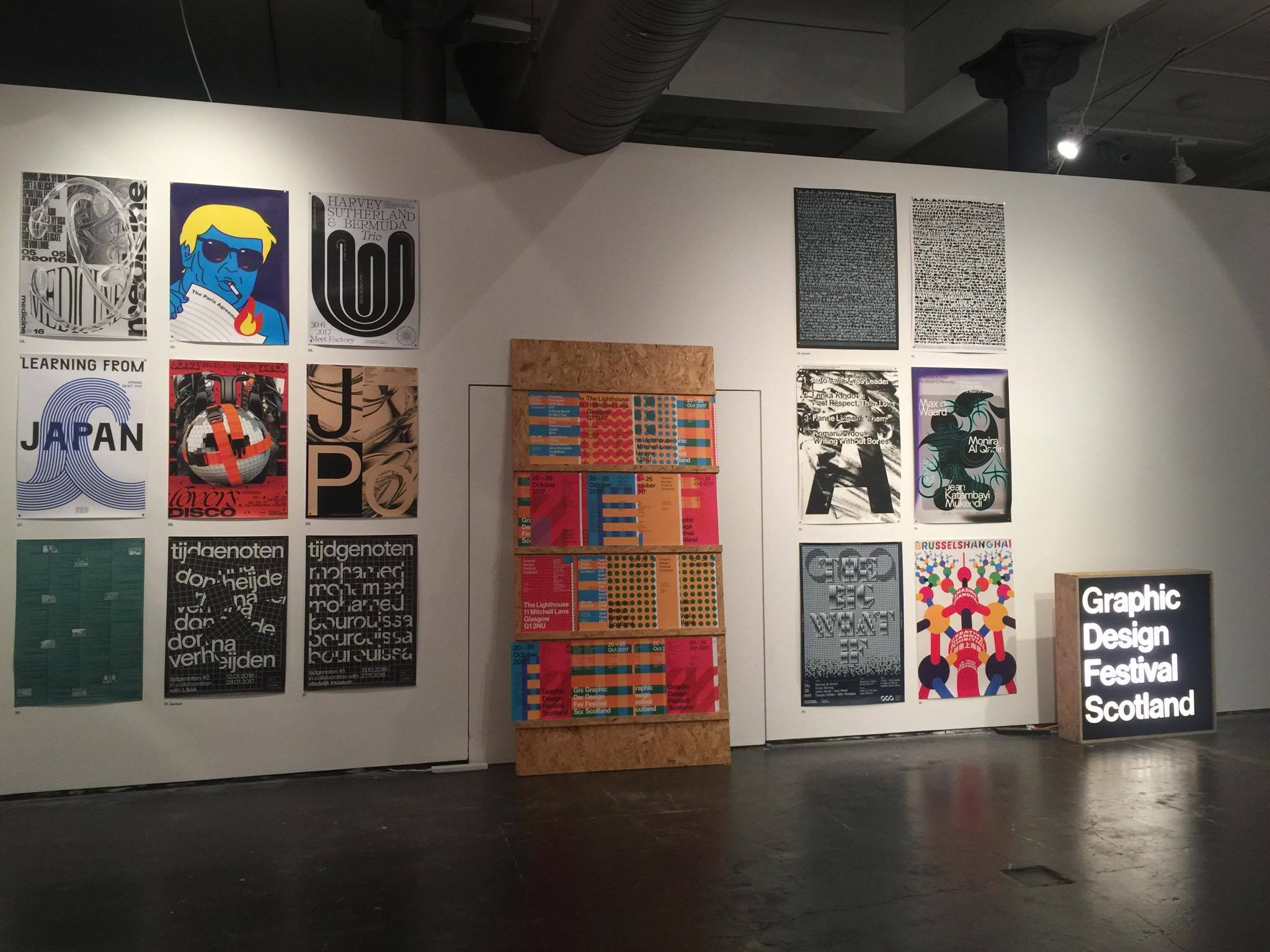Written By: Hannah Lane
Photo: Hannah Lane
The Lighthouse, 21 Oct – 25 Nov, Free to attend.
What defines a poster? This is the question posed by the diverse and eclectic posters currently on display at the International Poster Exhibition at The Lighthouse. The exhibition showcases 140 posters – selected from 6095 works from 82 countries – each of which was submitted to the Graphic Design Festival Scotland’s International Poster Competition. Whilst loosely organised according to country, there is no specific categorisation or order to the posters on display, allowing the viewer to walk freely within the spacious and airy gallery, forming connections and affiliations between each poster themselves.
As you walk around the gallery, you can see the huge diversity which is present within all the posters chosen for display. Historically, posters are an accessible and incredibly influential way of raising awareness; relaying information and announcing events; as well as functioning as powerful tools of political propaganda and as devices marketing consumerism. Much of the art displayed in the exhibition is a testimony to these functions of graphic design; amongst many they include promotions for theatre performances or cinema screenings, depictions of social or personal problems in the modern world, or something with a more political undertone.
Posters have the ability to draw you in to their sometimes cryptic but often blatant message, to spark a discussion, or to simply speak to an innate appreciation for visual portrayals of art. They can utilise everyday language or well-known figures combined with a politically or socially charged message to make even more of an impact. One depicts a photo of Martin Luther King wearing a Trump-esque baseball cap imprinted with the phrase ‘THIS WAS NOT MY DREAM’. Another portrays a scene akin to one found in a ‘Where’s Wally’ book, except the majority of characters are engaged in a fight and several of them sport black hoods, alluding to the climate of fear in Western Europe where people are alert to the smallest of things having a connection to terrorism.
Walking around the display you can see that some have less sinister, more entertainment-focused functions, and others are there for purely aesthetic value. They each speak in a different way about the purpose of the visual in society – ultimately causing us to consider how we are influenced and spoken to by the constant messages circling around our world.
SaveSave

